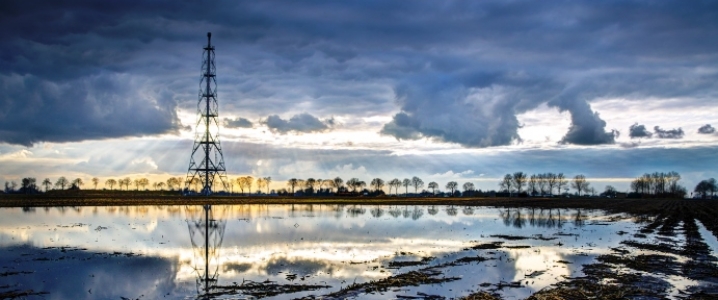In 2016 the Dutch gas market achieved a major milestone when the TTF natural gas hub became the benchmark for European gas, taking the lead from the British NGC. The significance of this achievement has yet to be fully understood as major changes are happening domestically due to politically motivated output curbs and depletion of other major European fields. This article will look at the reasons behind the rise of TTF, its importance for European energy security and possible future developments.
On 29 May 1959 Dutch geologists made a discovery that would transform the Netherlands for the coming decades. The Groningen gas field is the 9th largest in the world with a volume of 2.100 km3 and the only European asset in the global top 20 list. This discovery enabled the Netherlands to become a major regional supplier of natural gas. Currently, 11.000 kilometers of gas infrastructure exists in the Netherlands and Northern Germany managed by state-owned Gasunie Transport Services (GTS), which primarily owes its extensive size to domestic gas recourses. The presence of sophisticated energy infrastructure is a significant contribution to the success of TTF.
The strategic location of the Netherlands and significant consumers adjacent to its borders has been a major boon. The potential of the Netherlands as an important gas hub was acknowledged in 2002 when TTF was formally set up and the ‘gas roundabout' strategy was developed by the Dutch government. Since then, several important interconnector pipelines have been created in all directions, LNG regasification facilities built, and stable political support has ensured the steady growth of liquidity on TTF.
In 2016, TTF transcended NGC, previously the leading gas hub in Europe, with a traded volume of 21.468 TWh or 2.198 bcm natural gas. To put that in perspective, the Netherlands produced approximately 80 bcm of gas in the same year. This enormous liquidity means that gas in the system is traded multiple times before being consumed and therefore positively contributing to the price levels. Related: North Sea Oil Has Escaped Its Death Spiral
Another reason for the TTF’s and the Netherland’s growth of importance as a major gas hub is the solid export capacity to neighbors like Germany and the UK. The construction of the interconnectors NEL in 2012 in Germany and BBL in 2004, has ensured import capacity from Russia and Norway and export to the UK. While BBL is an export pipeline from the Netherlands to the UK, technical changes to the system will ensure reverse flow capacity starting in the autumn of 2019 due to higher storage capacity in the Netherlands in the summer, and rising demand in Britain in the winter. Another development that will enhance TTF’s position versus NGC’s is Brexit, which analysts think will improve the former’s position as the leading gas hub in Europe.
Increased seismic activity allegedly due to natural gas extraction has dealt a blow to domestic production in the Netherlands. While 54 bcm was produced in 2016 from the enormous Groningen field, extraction has been capped at 21.6 bcm in 2017 with more reduction being planned. This has increased the need for imported gas from Russia and Norway. However, technical difficulties will have to be overcome as Dutch installations are meant to consume Groningen gas which is of low calorific value, while high calorific is the norm internationally.
Gasunie Transport Services (GTS) has also been looking far into the future where gas consumption could start to decline. GTS is fully owned by the Dutch state and billions have been invested in the pipelines. This investment could also be harnessed in the future. GTS has been investing millions in research and developments of techniques to store surplus energy during peak hours of renewable sources. This would extend the lifetime and use of the infrastructure.
Furthermore, GTS signed up to the North Sea Wind Power Hub on September 2017 together with other transmission system operators: Tennet Netherlands, Tennet Germany, and Energinet. The collaboration envisions cooperation on further research and on the possible creation of a massive wind park in the North Sea for the production of 180 GW of wind energy. The expertise and infrastructure under the management of GTS in the northwestern corner of Europe could be very valuable in order to distribute, for example, hydrogen that could be produced with wind energy from the enormous park.
The TTF gas hub has profited from the strategic location of the Netherlands, significant gas production in Groningen and high-tech infrastructure. Despite TTF being the benchmark for the longer-term contract in Europe, continued political support and technological developments are a necessity to retain its position for the future to come.
By Vanand Meliksatian for Oilprice.com
More Top Reads From Oilprice.com:


















